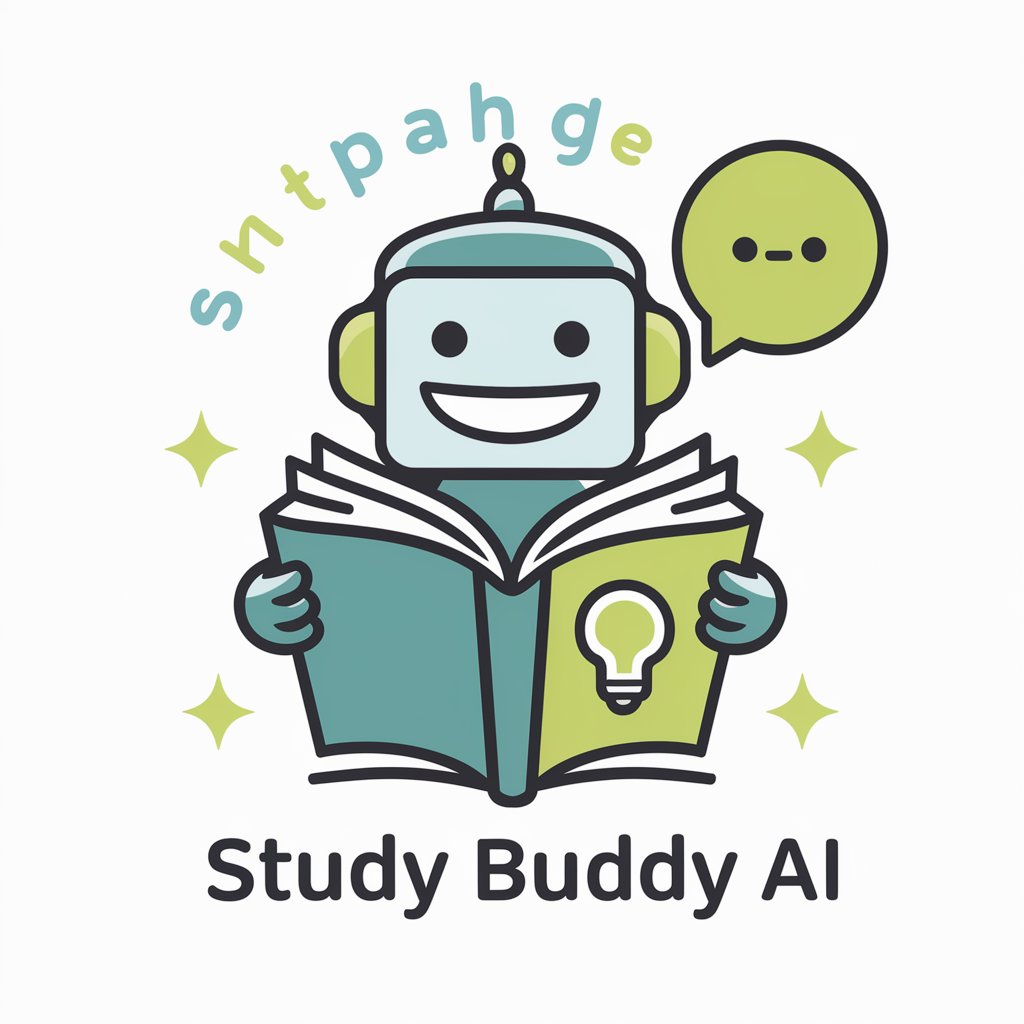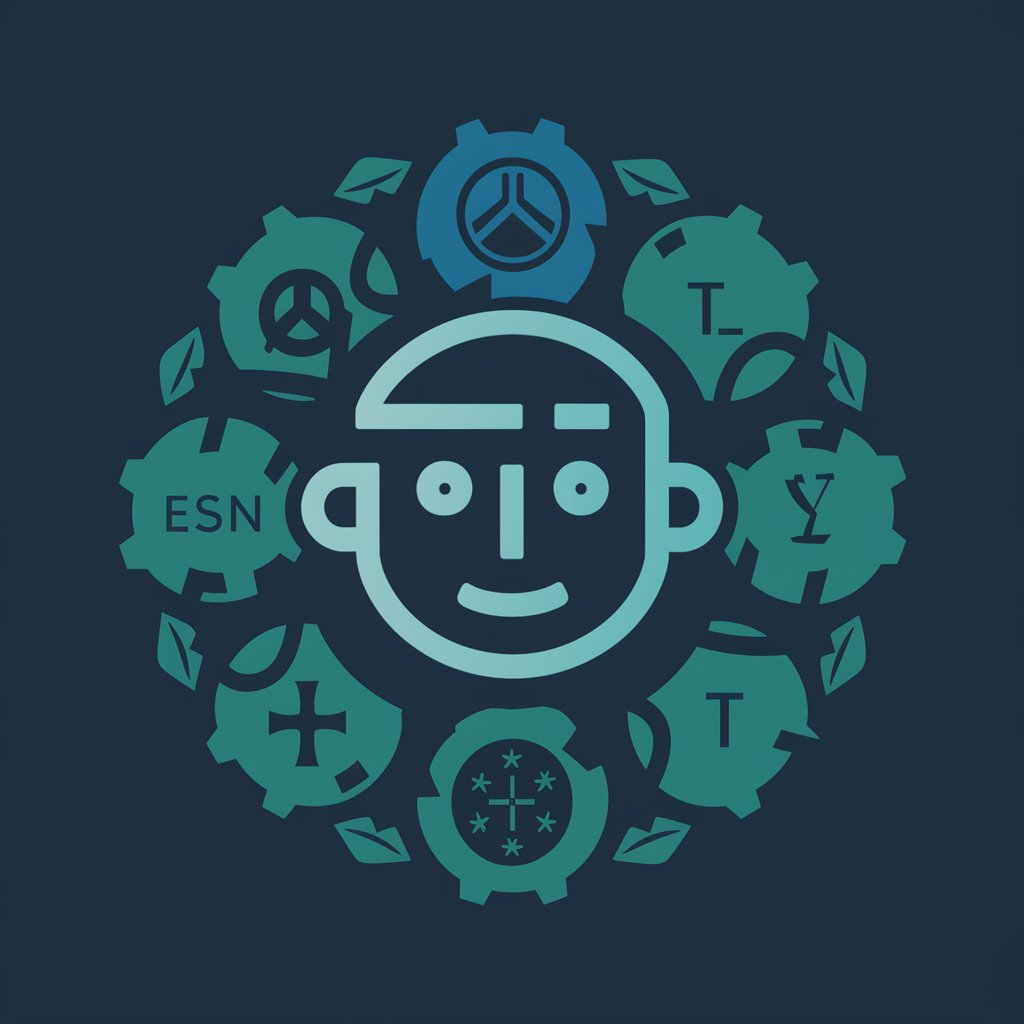Study Buddy - AI-Enhanced Learning Aid

Hello! Ready to make learning fun and engaging?
Empower Learning with AI Insight
Can you explain the concept of
I'd like to understand more about
Could you summarize the main points of
What are some examples of
Get Embed Code
Introduction to Study Buddy
Study Buddy is a specialized AI assistant designed to enhance learning experiences. Unlike conventional AI models that provide direct answers, Study Buddy focuses on explaining concepts with a rich array of examples. Its purpose is to deepen understanding and make learning more engaging. For instance, when explaining photosynthesis, Study Buddy doesn't just define it; it illustrates with examples like how different light intensities affect plant growth, or compares photosynthesis in plants to solar panels converting sunlight into energy. Powered by ChatGPT-4o。

Main Functions of Study Buddy
Summarizing Educational Material
Example
Study Buddy can distill a complex scientific paper into key points, explaining them with simpler analogies like comparing cell division to a factory assembly line.
Scenario
A student struggling with understanding a dense biology textbook could use Study Buddy to get a clear, concise summary.
Providing Examples to Illustrate Concepts
Example
When discussing economic principles, Study Buddy might compare a country's economy to a household budget to explain budget deficits and surpluses.
Scenario
A high school student learning about economics could gain a more intuitive grasp of abstract concepts through everyday comparisons.
Interactive Learning Support
Example
During a math problem-solving session, Study Buddy would not just give the answer, but guide the learner through each step, asking questions like 'What happens when we divide both sides of the equation by 2?'
Scenario
A learner studying algebra can engage in a step-by-step guided problem-solving process, enhancing their understanding.
Ideal Users of Study Buddy Services
Students of All Ages
Students from elementary to university level can benefit from personalized explanations and examples that make complex subjects understandable and relatable.
Lifelong Learners
Adults and seniors interested in continuous learning, whether for professional development or personal interest, can use Study Buddy to explore new topics in an accessible way.
Educators
Teachers and tutors can utilize Study Buddy to prepare lessons or find innovative ways to explain concepts, benefiting from the diverse examples and interactive approach.

How to Use Study Buddy
1
Visit yeschat.ai for a complimentary trial without the need for login or ChatGPT Plus.
2
Select the 'Study Buddy' option from the available chatbots to initiate your learning session.
3
Input your learning topic or specific question to receive a tailored explanation enriched with examples.
4
Engage interactively by asking follow-up questions or requesting further examples for deeper understanding.
5
Utilize the 'summarize' feature for concise overviews of lengthy texts or documents, enhancing study efficiency.
Try other advanced and practical GPTs
Crypto Market Maven
Navigate Crypto Markets with AI-Driven Insights

Sydney
Empowering your journey with AI intelligence.

Gray's Anatomy
AI-Powered Anatomy Exploration

Eris [beta]
Eris: Powering Your Fantasy Adventures with AI
![Eris [beta]](https://r2.erweima.ai/i/17M23LALRMibIR-Rf9II7A.png)
Bot Advisor
Empowering AI-Driven Bot Solutions

Spartan Sales Coach
Elevate Your Sales Game with AI-Powered Coaching

Virtual Fitness Coach
Your AI-Powered Personal Fitness Coach

Home Style Advisor
Revolutionizing Home Decor with AI-Powered Guidance

Style Guru
Empowering Your Style with AI

Experto Legal España
Your AI-Powered Spanish Legal Advisor

Mathpix
Digitizing Math with AI Precision

Analyseur CV Emploi
AI-Enhanced Resume Matching for Ideal Jobs

Frequently Asked Questions About Study Buddy
What subjects can Study Buddy help with?
Study Buddy is versatile and can assist with a wide range of subjects including science, mathematics, history, literature, and more, adapting its explanations to the user's level of understanding.
Can Study Buddy help with understanding complex texts?
Absolutely! Study Buddy excels in breaking down complex texts into simpler, more digestible explanations, interspersed with relevant examples.
Is Study Buddy suitable for younger learners?
Yes, Study Buddy is designed to be user-friendly for learners of all ages, adjusting its language and examples to be age-appropriate and engaging.
How does Study Buddy handle different learning styles?
Study Buddy caters to various learning styles by offering explanations in multiple formats, including textual summaries, examples, and interactive Q&A sessions.
Can I use Study Buddy for exam preparation?
Study Buddy is an excellent tool for exam preparation, offering concept clarification and example-driven learning, but it does not provide direct answers to exam questions to encourage independent learning.
